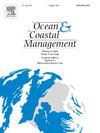Habitat suitability models as a prioritization tool for enhancing the restoration success of Ericaria amentacea
IF 5.4
2区 环境科学与生态学
Q1 OCEANOGRAPHY
引用次数: 0
Abstract
Ecological restoration is increasingly recognized as crucial for addressing global environmental challenges, including biodiversity loss, ecosystem degradation and climate change. Restoration efforts, such as those outlined in the European Biodiversity Strategy and the UN Sustainable Development Goals, are gaining momentum worldwide. Additionally, the EU recently put into force Regulation (EU) 2024/1991 on Nature Restoration, that sets ambitious targets for restoring degraded habitats.
In the Mediterranean, brown macroalgae belonging to the Cystoseira s.l. complex (including Cystoseira, Gongolaria, and Ericaria) play an important role as “ecosystem engineers” in coastal habitats, although their populations have declined due to anthropogenic pressures. Restoration efforts are essential to support the conservation of the forests they form. In this context, Habitat Suitability Models (HSMs) provide an effective tool for guiding restoration strategies by mapping the distribution of suitable habitats. By establishing correlations between species distribution and environmental conditions, HSMs provide insights into potential restoration sites, enhancing conservation efforts. In this regard, this study develops a habitat suitability model (HSM) for the species Ericaria amentacea along the Ligurian coast (NW Mediterranean). Using presence-absence data combined with environmental and anthropic variables, the Random Forest algorithm predicted 1201sectors suitable for E. amentacea while only 313 sectors are verified on field. The Habitat Quality model (INVEST Workbench), along with an assessment of proximity to harbors and marinas, was used to further refine and prioritize the sectors predicted by the model that are most likely to succeed in restoration effort, based on accessibility and habitat quality. These findings offer a valuable tool for enhancing biodiversity conservation and restoration efforts in Mediterranean coastal ecosystems.
生境适宜性模型作为提高沙芹恢复成功率的优先工具
人们日益认识到,生态恢复对于应对生物多样性丧失、生态系统退化和气候变化等全球环境挑战至关重要。欧洲生物多样性战略和联合国可持续发展目标概述的恢复工作正在全球范围内获得动力。此外,欧盟最近实施了《自然恢复条例(EU) 2024/1991》,为恢复退化的栖息地设定了雄心勃勃的目标。在地中海,尽管由于人类活动的压力,褐藻在沿海生境中扮演着“生态系统工程师”的重要角色,但其数量却有所下降。恢复工作对于支持它们形成的森林的保护至关重要。在此背景下,生境适宜性模型(hsm)通过映射适宜生境的分布为指导恢复策略提供了有效的工具。通过建立物种分布与环境条件之间的相关性,hsm可以深入了解潜在的恢复地点,从而加强保护工作。为此,本研究建立了利古里亚沿岸(地中海西北部)毛蚶生境适宜性模型(HSM)。结合环境变量和人为变量,随机森林算法预测了1201个适合沙棘的扇区,而只有313个扇区得到了现场验证。栖息地质量模型(INVEST Workbench),以及对港口和码头邻近程度的评估,被用于进一步完善和优先考虑模型预测的最有可能成功恢复工作的部门,基于可达性和栖息地质量。这些发现为加强地中海沿岸生态系统的生物多样性保护和恢复工作提供了有价值的工具。
本文章由计算机程序翻译,如有差异,请以英文原文为准。
求助全文
约1分钟内获得全文
求助全文
来源期刊

Ocean & Coastal Management
环境科学-海洋学
CiteScore
8.50
自引率
15.20%
发文量
321
审稿时长
60 days
期刊介绍:
Ocean & Coastal Management is the leading international journal dedicated to the study of all aspects of ocean and coastal management from the global to local levels.
We publish rigorously peer-reviewed manuscripts from all disciplines, and inter-/trans-disciplinary and co-designed research, but all submissions must make clear the relevance to management and/or governance issues relevant to the sustainable development and conservation of oceans and coasts.
Comparative studies (from sub-national to trans-national cases, and other management / policy arenas) are encouraged, as are studies that critically assess current management practices and governance approaches. Submissions involving robust analysis, development of theory, and improvement of management practice are especially welcome.
 求助内容:
求助内容: 应助结果提醒方式:
应助结果提醒方式:


